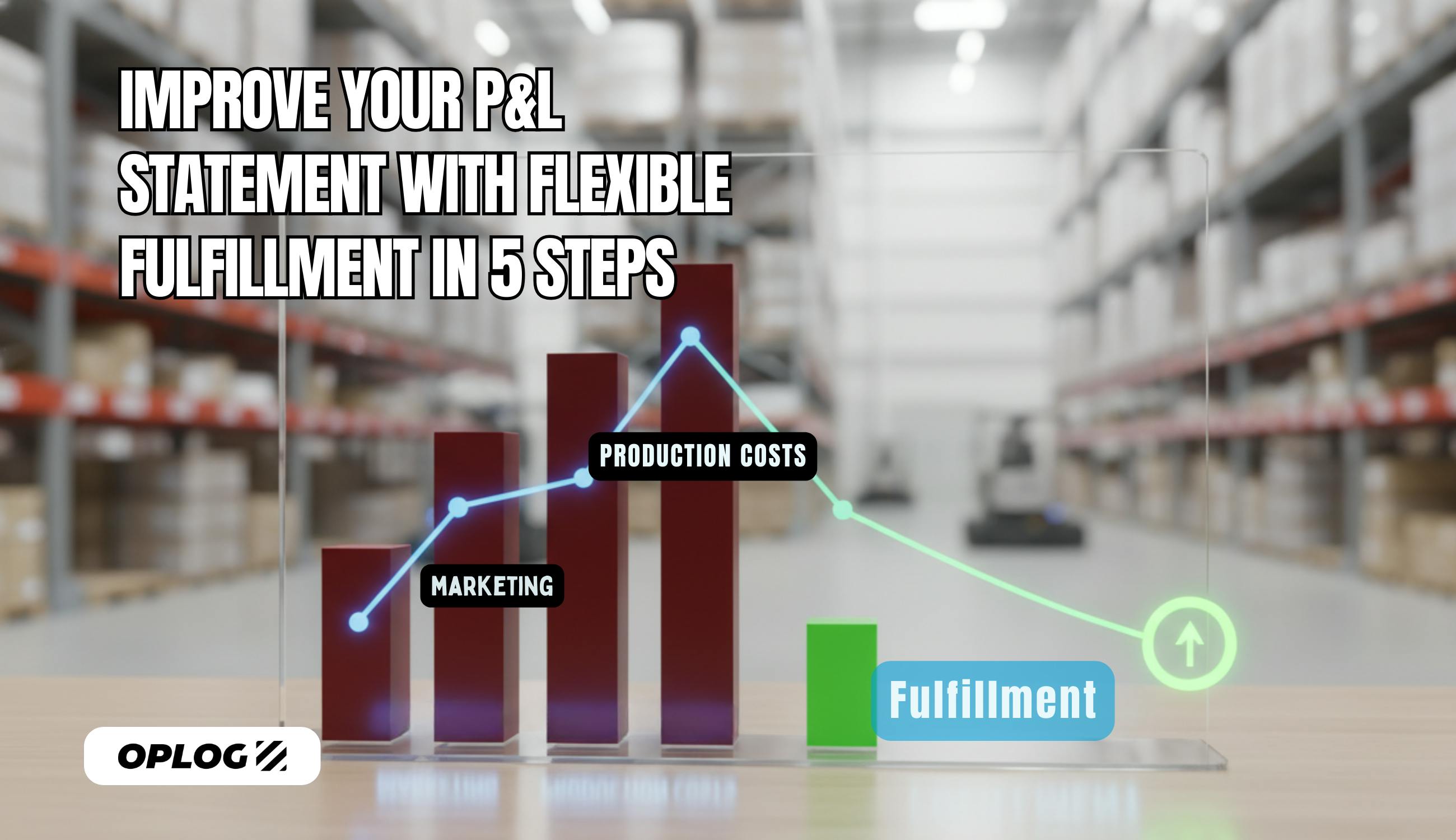What Are the Ways to Improve the Supply Chain Process in eCommerce?
The supply chain is the interconnected network of organizations, resources, activities, and technologies involved in producing, distributing, and delivering goods and services from suppliers to end consumers. It includes all the steps and processes required to transform raw materials into finished products and make them available to customers.
A well-optimized supply chain is crucial for the success of eCommerce businesses. In the competitive world of online retail, where customers expect fast and efficient service, a streamlined supply chain can make all the difference.
Did you know?
According to Statista, 41% of consumers expect to have their order within 24 hours, and 24% within less than two hours.
In this blog post, we will explore various strategies to improve the supply chain process in eCommerce, focusing on the key areas:
1. Importance of Warehouse Efficiency
2. Enhancing Transportation and Shipping Processes
3. Demand Forecasting and Vendor Management
4. Streamlining Reverse Logistics and Distribution Network
4 Ways to Improve Supply Chain Process in eCommerce
First, as an eCommerce business, improving your supply chain management and providing better service is crucial for success. Here are the four most important steps to enhance your operations.
Warehouse Efficiency
Warehouses are essential for eCommerce businesses in the supply chain process. They serve as central hubs for storing, managing, and distributing goods and play a critical role in ensuring timely order fulfillment and meeting customer expectations.
Strategically optimizing your warehouse processes can significantly improve your supply chain performance.
But how?...
Let's have a look!
Strategies to improve warehouse efficiency in eCommerce
Efficient warehouse management involves optimizing layout, leveraging technology for inventory tracking and picking, and implementing distributed inventory and order fulfillment strategies.
Layout optimization and space utilization
Optimizing the layout and maximizing space utilization in your warehouse is an effective way to improve efficiency.
By organizing your storage areas based on product characteristics and demand patterns, implementing efficient racking systems, and employing space-saving techniques such as vertical stacking, you can;
- minimize travel time
- enhance accessibility
- optimize storage capacity.
Implementing technology for inventory tracking and picking
Leveraging technology solutions can significantly enhance warehouse efficiency.
By implementing automated systems for inventory tracking, such as barcode or RFID scanners, you can gain real-time visibility and achieve accurate inventory management. These tools enable you to track inventory, recognize locations, and identify tagged items efficiently, helping you monitor inventory management and picking processes.
OPLOG One was designed to increase your online store's efficiency and sales.
It provides complete visibility, so you can easily track your inventory, orders, returns, and more. This way, you can renew your stocks when necessary and notify your vendors.
Contact one of our specialists now!
Distributed inventory
Distributed or decentralized inventory strategically stores inventory in multiple locations or distribution centers across a supply chain network.
Instead of centralizing your inventory in a single location, strategically storing stock in multiple locations or distribution centers across your supply chain network can improve your order fulfillment speed, reduce transportation costs, and enhance overall supply chain efficiency.
This means positioning your inventory closer to your customers or demand centers, ultimately benefiting your business.
Efficient order fulfillment strategies
By optimizing your picking routes, batch processing similar orders, and implementing wave-picking techniques, you can minimize travel distances, reduce picking time, and improve order accuracy. These strategies will improve your order fulfillment process, ensuring faster and more accurate deliveries to your customers.
Supercharge your supply chain with OPLOG: Your reliable fulfillment partner in Europe, the UK, and the US!
Transportation and Shipping Process
Efficient transportation and shipping are vital for meeting customer expectations and ensuring timely deliveries. Let's dive into the solutions that optimize transportation and shipping processes within your eCommerce supply chain.
Efficient shipping processes ensure that products are transported safely and cost-effectively, contributing to customer satisfaction, brand reputation, and overall supply chain success.
Solutions to optimize transportation and shipping processes
To improve transportation and shipping efficiency, consider implementing the following solutions:
Route optimization and carrier selection
Utilize advanced logistics software and data analysis to identify the most efficient routes considering the distance, traffic conditions, and delivery time windows. Additionally, strategically select reliable carriers and negotiate favorable contracts to minimize costs while maintaining service quality.
Packaging
Optimize packaging materials and practices by right-sizing packages and ensuring proper protection of goods during transit. This reduces dimensional weight charges and lowers the risk of damage or returns.
Collaborate with third-party logistics providers
Partnering with experienced third-party logistics (3PL) providers can optimize transportation and shipping operations. 3PLs offer expertise in;
- Managing complex logistics networks
- Leveraging established carrier relationships
- Utilizing advanced technology solutions.
By outsourcing transportation and shipping to reliable 3PL partners like OPLOG, you can benefit from our industry knowledge and cost-effective shipping options, allowing you to focus on growth and minimize costs.
Demand Forecasting and Vendor Management
Accurate demand forecasting and effective vendor management are crucial elements of a successful eCommerce supply chain. Let's explore strategies in these areas.
Accurate demand forecasting enables effective inventory planning, production scheduling, and order fulfillment.
Effective demand forecasting and vendor management strategies in eCommerce
To optimize demand forecasting and vendor management, consider implementing the following strategies:
Establishing solid relationships with suppliers
Building solid relationships with suppliers is critical to effective vendor management. You can establish mutually beneficial partnerships by fostering open communication, trust, and collaboration.
Strong relationships encourage suppliers to provide competitive pricing, reliable delivery, and flexibility in meeting changing demands. Regular communication and feedback help address issues proactively and create a win-win situation for both parties.
Sharing demand forecasts and data with vendors
Sharing demand forecasts and data with vendors is essential for effective vendor management. By providing accurate and timely information on anticipated demand, you can enable vendors to plan their production and inventory accordingly.
Are you looking to improve customer and vendor satisfaction, streamline operations, and save on costs? The solution is to bring together B2B and B2C operations through Omnichannel Fulfillment!
Get information about OPLOG's Omnichannel Fulfillment now.
Collaborating on inventory planning and replenishment
Collaborating with vendors on inventory planning and replenishment is crucial for efficient supply chain management. By sharing inventory data, sales forecasts, and lead times, businesses and vendors can synchronize their efforts to optimize inventory levels and ensure timely replenishment.
Reverse Logistics and Distribution Network
Reverse logistics refers to managing product returns, repairs, and disposal in the supply chain. As a seller, it's important to consider reverse logistics—managing product returns, repairs, and disposal—in your eCommerce supply chain.
It directly impacts customer satisfaction, operational efficiency, and sustainability initiatives. Let's explore how optimizing your distribution network for efficient reverse logistics can benefit your business.
Optimizing the distribution network for efficient reverse logistics
The distribution network for efficient reverse logistics addresses customer concerns, minimizes financial losses, and supports sustainability initiatives. Exploring the importance of reverse logistics helps your eCommerce business to understand its impact on customer experience, profitability, and environmental responsibility.
Managing returns
Implement clear return policies, establish return authorization procedures, and dedicate return centers or facilities to expedite the handling and processing of returned items. Properly managing returns optimizes the reverse logistics process.
Collaborating with distribution partners for reverse logistics
Clear lines of communication ensure smooth coordination, timely updates on returns, and effective problem-solving. And it is also important to share return data and insights with your distribution partners and provide valuable information for process improvement. By sharing data on return reasons, product conditions, and customer feedback, both parties make informed to optimize the reverse logistics process.
Analyzing return trends and addressing root causes
Analyzing return trends and identifying the root causes of returns helps you proactively address issues and improve product quality or customer experience. By leveraging data analytics and customer feedback, you can identify patterns, detect recurring issues, and take corrective actions.
For example, Amazon started to "flag" the most common returned items to reduce returned product amount by detecting the returns' causes and warning the consumer.
Moreover, they will start to use artificial intelligence to determine damaged products in the warehouses. In this way, they aim to reduce the number of damaged products and prevent their shipments.
So...
We have just explored various ways to improve the supply chain process in eCommerce, focusing on critical areas such as supply chain optimization, warehouse efficiency, transportation and shipping solutions, demand forecasting, vendor management, reverse logistics, and distribution network.
It is easier to control each step in your business with a firm to assist you in your operations. You can collaborate with OPLOG, a third-party fulfillment provider, to handle all these processes and enjoy providing an excellent customer experience while improving your supply chain processes.






